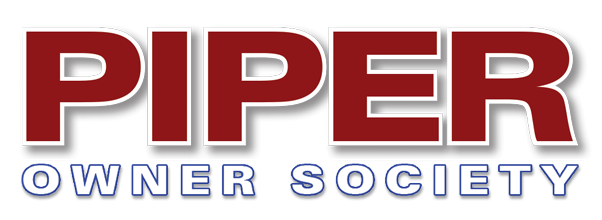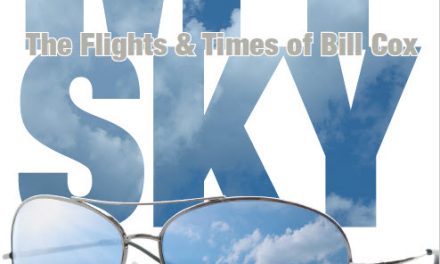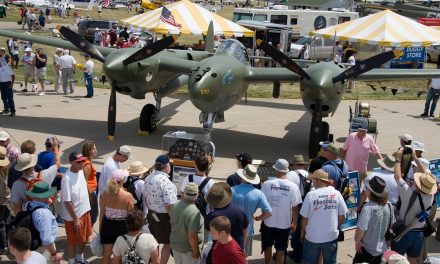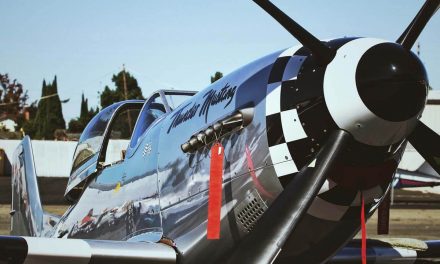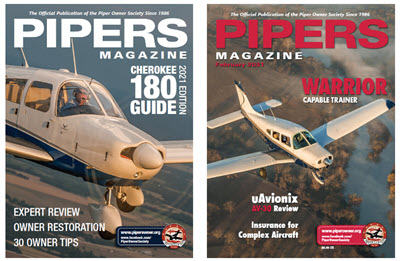
By Bill Cox
How much reserve is enough when crossing the Pacific?
Until a few years ago when Mobil stopped refining avgas, Majuro was a standard stop for piston aircraft on the road to Australia, Japan, and points throughout Indonesia. I made perhaps two dozen trips through the Marshalls in the 1990s, flying mostly new Mooneys, Cessna 206s, and Piper Mirages to or from Australia and Japan. In case you’ve never heard of the Marshalls, think Bikini Atoll. Does that clarify it?
On one 11,000-nm ferry flight eastbound from Sendai, Japan, to Aachen, Germany (the wrong way around), in 1999, I was flying a near-new Mirage with a neoprene-bladder ferry tank in back. This was my first (and thankfully only) trip with a bladder tank, and I was eager to be done with it. Read on.
After a relatively uneventful crossing from Sendai down to Guam, and a similarly simple transition over Majuro, I departed the Marshall Islands at 6:30 a.m. and climbed out in the direction of Johnston Island, the next landfall almost 1,300 miles distant and directly on line to Honolulu. Predictable trade winds were in my face all the way, subtracting perhaps 15-20 knots from the airplane’s 200-knot true airspeed at FL210. The Pacific was benign on that smooth, clear morning in May as I tracked backwards in time toward yesterday and Honolulu, 20 degrees on the “front” side of the international date line.
Just over seven hours out, Johnston came into view far ahead, partially hidden beneath scattered popcorn cumulus beginning to materialize as the day heated up. If the bad news about the Pacific is that there’s often nothing to see but millions of square miles of ocean, the good news is that the visibility is excellent.
The Mirage was flying smooth and happy, and so was I as we tracked on toward Honolulu at 180 knots. The flight plan suggested the leg would be only about 11.5 hours, a relatively short hop before a day off in Honolulu.
The faint odor of avgas is nearly constant in tanked ferry airplanes, but as I closed on Johnston, the fuel odor became stronger. Within a few minutes, it was obvious I had a leak in the ferry tank, and the odor was becoming overpowering.
I advised San Francisco long range of my problem on HF, then immediately initiated an emergency descent. Level at 10,000 feet, I dumped the cabin pressurization, popped open the left storm window, and leaned forward to breathe the clean Pacific air. Johnston was only 30 miles away now, a small, rectangular island partially covered by a 9,000-foot runway, hangars, and a clutch of suspicious Quonset huts cluttering what was left of its surface.
Johnston was the worst-kept secret in the Pacific. During the ’60s, it had been headquarters for the nuclear weapons atmospheric tests. Now, practically everyone knew it was America’s repository for chemical and biological weapons. The U.S. Air Force was systematically burning them up in furnaces at the southwest corner of the island. The trades blow so consistently across Johnston from Hawaii that the smoke plume nearly always blows straight toward the Marshalls, 1,300 nm away with not even a rock in between. The thinking was that if there were ever an accidental release of chemical or biological agents, it would have plenty of time and distance to dissipate. (Still, traditional wisdom in the general aviation ferry business was never to cross Johnston below 10,000 feet. “Doctor, I have this strange cough … ”)
For obvious reasons, landing at Johnston was strictly prohibited unless you had a real emergency. Running short of fuel was not considered “real.” A Beech A55 Baron on the same route had gone in there two weeks before when his how-goes-it suggested he’d misjudged the winds and wouldn’t make Kauai, and the Air Force had not been sympathetic. With not a drop of avgas on the island, they’d put the pilot on the first military shuttle back to Honolulu where he had to arrange for shipment of two barrels of fuel to Johnston, return, refuel the airplane, and continue the trip. Subtract $5,000 from any profit.
I dialed up Johnston’s frequency and punched the push-to-talk. “Johnston, November 3274B, we’re 30 southwest out of Majuro on an IFR for Honolulu, and it looks as if we have a fuel leak in a ferry tank.”
Short pause, then, “Roger 74B, this is Johnston, how may we be of service?”
He doesn’t get it, I thought. “Johnston, I don’t know how long I’ve been leaking or how much fuel I’ve lost. The fuel odor is pretty overpowering,” I said.
Long pause, then, “Sir, you have to say the words,” came the bored reply.
Finally, I relented. “OK, Johnston, November 3274B is declaring a fuel emergency.”
“Roger that, 74B. Altimeter is 30.01, wind is 030 at 12 and active runway is 05. Would you like the equipment?” Still bored.
“Negative on the equipment, Johnston,” I said. “I’m OK so far. I’ll enter a left downwind for 05.”
“I understand, 74B. By the way, we’d suggest you not fly through the plume of smoke coming off the smokestacks at the southwest corner of the island.” Hmmm. I overflew the island, entered a downwind, turned tight to avoid the ominous smoke, landed, and taxied into the small terminal building where a jeep full of MPs was waiting — with weapons. They were friendly enough but also very businesslike. While a young lieutenant was checking my paperwork, one airman climbed into the Mirage, rummaged around inside for a few minutes, then came out almost staggering as he climbed down the bottom clamshell.
“Jeez, he’s right sir, he has a bad fuel leak. There’s nothing in the airplane,” the airman told his lieutenant, shaking his head from the fumes. We could see a constant trickle of fuel leaking from the Mirage’s belly.
The officer smiled, handed back my license and medical and said, “OK, sir, it appears you had a legitimate emergency, but you need to fix it and leave. This is a top-secret military installation and we have no facilities for civilians here.”
While the military cops looked on, I went back to the airplane and discovered the source of the leak in about 30 seconds; a cracked, clear plastic fuel line coming out from the bottom of the rubber tank. Fortunately, there was plenty of extra tubing, so I pulled out my trusty Swiss Army knife, sliced a new length, clamped it in place, and was ready to continue in about five minutes.
Trouble was, now what? How much fuel had I lost? The 150-gallon rubber tank gave me no clue. How much less bulbous should it be when there are five gallons missing? Twenty gallons? How about 30? Fully inflated, the tank is a giant black bubble. How do you measure fuel use when there’s no gauge?
The leak seemed so small, I couldn’t imagine I’d lost much fuel, but I had no way of knowing for sure, and the middle of the Pacific is a bad place for SWAG (scientific wild-assed guess) estimates.
The GPS suggested it was 640 miles to Kauai, 700 to Honolulu. While the Air Force had assured me I wasn’t in trouble, they’d made it clear I had to leave now!
I made a SWAG estimate of remaining fuel and then called the tower to have them put me back on file for Honolulu. I climbed back aboard the big Piper and departed Johnston with an uneasy feeling. The plan was to run the fat ferry tank until it was completely flat and empty, then switch back to the main wing tank and finish the trip with some idea of known quantity.
I climbed up to 15,000 feet this time to stay below the worst of the wind and began tracking R584 toward Choko intersection and Honolulu. Before I’d gone far, the depth of my stupidity overwhelmed me. I was crossing the Pacific Ocean, and I didn’t know how much fuel I had on board!
I punched the mic button on the HF and told San Francisco I was diverting to Kauai. I turned slightly left, cranked the identifier for Kauai into the GPS, and hoped the wind would be a little friendlier on the new heading. It wasn’t. Instead, the Mirage lost about 8 knots as I plunged on into gathering darkness.
As I closed on Kauai, the headwind component increased, and I advised San Francisco to stand by, as I might need help from SAR. I finally saw the lights of the island appear in the distance. By this time, I was back on the 60-gallon main wing tanks, having long since exhausted the rubber ferry tank. My GPS counted down the miles with what seemed glacial speed as both fuel gauges dropped toward zero.
I crossed the southwest coast of Kauai, spotted the rabbit, and followed the lights to the most welcome touchdown I’ve made anywhere in the world.
Nine gallons. That was the answer to the big question the next day. That’s about a half-hour in a Mirage, and if that seems like a lot, remember that I started the day with 270. When we’re in our right mind out on the ocean, we like to land with two hours of reserve.
I’ll certainly never make that mistake again. But I’ll find some new ones.
